ARIOSTO, Ludovico. Orlando furioso di m. Lodouico Ariosto nuouamente adornato di figure di rame da Girolamo Porro padouano et di altre cose che saranno notate nella seguente facciata.
Venice, Francesco de Franceschi., 1584.Quarto (265x180 mm.), three parts in one volume; [20] leaves, 654 pages, [17] leaves, 43, [1] leaf with the blank leaves u8 and l4 Title-page engraved, within an architectural border including a portrait of Ariosto, standing figures of Mars and Venus with Cupid, and De Franceschi's Peace-device; another printer's device on the title-page of the second part. Separate title-pages for the Cinque Canti, and for the Osservazioni del Sig. Alberto Lavezuola, both signed ‘Giacomo Francho Fecit'. Forty-six-full-page engravings, one for each canto (plate for Canto ix signed by Porro), and five for the Cinque Canti. Engraved borders for the argomenti, in six different border designs, some engraved on more than one copperplate. Cherub, grotesque, and foliated initials; cherub headpieces, grotesque tailpieces. A couple of old repairs in the white margings, light browing here and there, overall a very fine copy in a contemporary Parisian binding; stiff overlapping vellum, double gilt fillet on covers, gilt center ornament of laurel leaf tools, spine decorated with gilt fillets and fleurons and with manuscript title, gilt edges. From the library of Vico de'Gobbis (ex libris).
The most sumptuous edition of the Orlando Furioso, the first edition illustrated with copperplates. ‘The only Furioso to stand out from the normal run of editions after 1566 was one printed in 1584 by Francesco De Franceschi. Its appeal to the reader was based, typically for its time, on the literary and artistic presentation of the poem rather than on the accuracy of the text. The basis for the edition was Ruscelli's text and annotations. New engravings by Girolamo Porro were considered important enough to be the first attraction listed after the name on the title page” (B. Richardson, Print Culture in Renaissance Italy, p. 148) ‘The Italian 1584 edition is the first Italian edition to be illustrated with copper plates, one placed at the beginning of each canto. Each plate shows various characters from the poem and illustrates each of them in their several actions through the canto. This results in a character being portrayed several times within the same plate, with the visual effect of them moving within the illustration and within the canto'. (Veronica Pizzarotti, The Rylands blog) The author of this lavish icongraphic apparatus was the famous Italian engraver Girolamo Porro who used as base for his illustrations the woodcuts of the 1566 Valgrisi edition even if Porro's copperplates are not replicas of this earlier models: different episodes are always chosen, new inventions are added, and the elaborate frames used by Valgrisi are replaced by simple patterns. These illustrations with some alterations and changes were copied to illustrate John Harington's first English translation of the Orlando Furioso, printed in London by Richard Field in 1591. In our copy the illustration for canto 33 is repeated for canto 34. It is generally belived that the illustration for canto 34 which cointained an image of the pagan Astolfo with St. John the Evangelist in Heaven was suppressed by order of the Inquisition. From a textual point of view, this edition follow the text edited by Gerolamo Ruscelli for the edition printed by Valgrisi in 1556. New explanatory texts are published in this edition for the first time: Vita di M. Lodovico Ariosto, scritta dal sig. Girolamo Garofalo ferrarese; the Allegoria di Gioseffo Bononome sopra il Furioso di M. Lodovico Ariosto and the Epiteti usati dall'Ariosto nel suo Furioso, cavati et posti per ordine d'alfabeto da Camillo Camilli. At the end of the volume we can find the Osservationi sopra il Furioso di m. Lodovico Ariosto. Nelle quali si mostrano tutti i luoghi imitati dall'Auttore nel suo Poema by Alberto Lavezuola. These Osservazioni, published here for the first time, and reprinted in 1730 by Orlandi in his famous edition of the Orlando Furioso, represent the last exegetical commentary to the Furioso produced in the Cinquecento. The most important innovation in Laveruola's Osservazioni , in contrast with the traditional approach of Ludovico Dolce, is the attention paid to the modern sources used by Ariosto: Dante, Petrarca, Boccaccio, Poliziano and Bembo.
Brunet I, 436: “Edition assez belle [...] elle est recherchée à cause des notes qui l'accompagnement et des gravures dont elle est ornée [...]”. Gamba 58: “Quanto ad illustrazioni la presenta stampa sopravanza le antecedenti del Valgrisio e del Valvassori”. Agnelli-Ravegnani, pp.155-158: "È, questa, a parer di molti, la più sontuosa edizione del Furioso [...]”.
Other Books
![Trattato della natura de’ cibi et del bere [...] nel quale non solo tutte le virtù, & i vitij di quelli minutamente si palesano; ma anco i rimedij per correggere i loro difetti copiosamente s’insegnano. Trattato della natura de’ cibi et del bere [...] nel quale non solo tutte le virtù, & i vitij di quelli minutamente si palesano; ma anco i rimedij per correggere i loro difetti copiosamente s’insegnano.](https://www.medariquier.com/typo3temp/pics/d4e0248596.jpeg)
PISANELLI, Baldassarre
Trattato della natura de’ cibi et del bere [...] nel quale non solo tutte le virtù, & i vitij di quelli minutamente si palesano; ma anco i rimedij...
SOLD OUT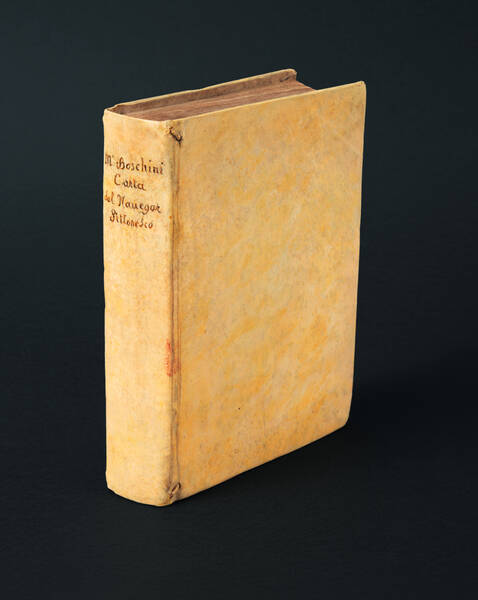
BOSCHINI, Marco
La carta del nauegar pitoresco dialogo tra vn senator venetian deletante, e vn professor de pitura, soto nome d'ecelenza, e de compare. Comparti' in...
€ 7.000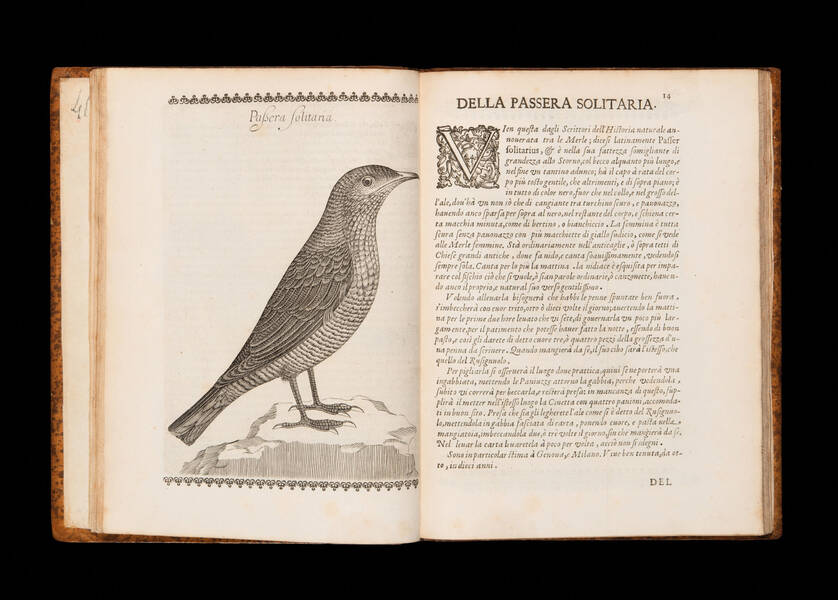
OLINA, Giovanni Pietro
Vccelliera ouero discorso della natura, e proprieta di diuersi vccelli, e in particolare di que' che cantano. Con il modo di prendergli, conoscergli,...
€ 6.000![[De Architectura libri decem], M. Vitruuius per Iocundum solito castigatior factus cum figuris et tabula vt iam legi et intelligi possit. [De Architectura libri decem], M. Vitruuius per Iocundum solito castigatior factus cum figuris et tabula vt iam legi et intelligi possit.](https://www.medariquier.com/typo3temp/pics/b57e48f107.jpg)
VITRUVIUS POLLIO, Marcus
[De Architectura libri decem], M. Vitruuius per Iocundum solito castigatior factus cum figuris et tabula vt iam legi et intelligi possit.
SOLD OUT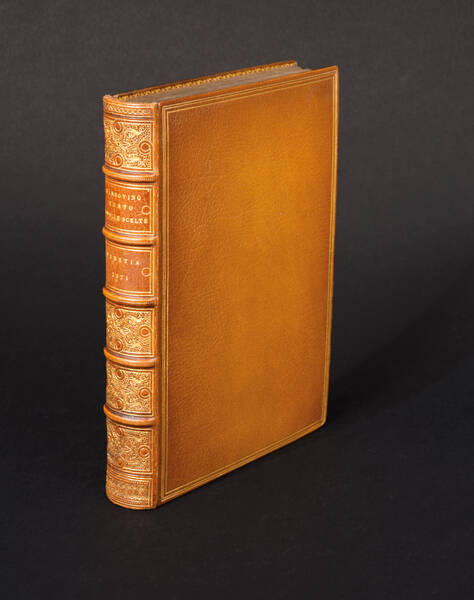
SANSOVINO, Francesco
Cento nouelle scelte da piu nobili scrittori della lingua volgare, con l'aggiunta di cento altre nouelle antiche, non pur belle per inuentione, ma...
€ 3.600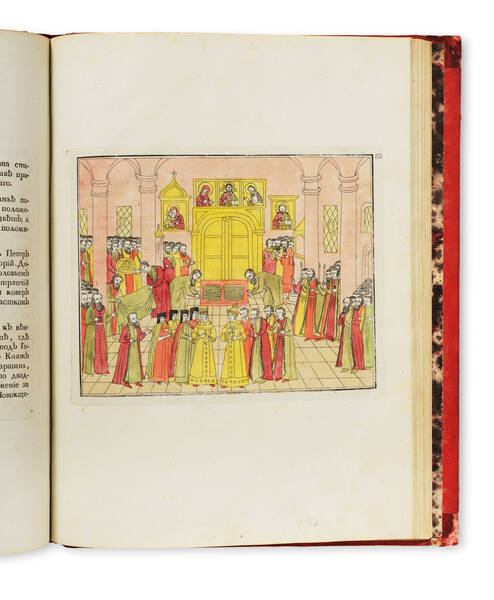
BEKETOV, Platon
Opisanie v litsakh torzhestva, proiskhodivshego v 1626 godu fevralia 5, pri brakosochetanii gosudaria tsaria i velikogo kniazia Mikhaila...
SOLD OUT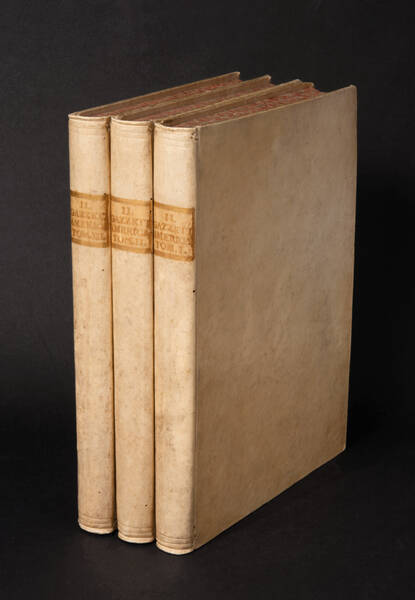
GAZZETTIERE AMERICANO
Il Gazzettiere Americano, contenente un distinto Ragguaglio di Tutte le Parti del Nuovo Mondo.
SOLD OUT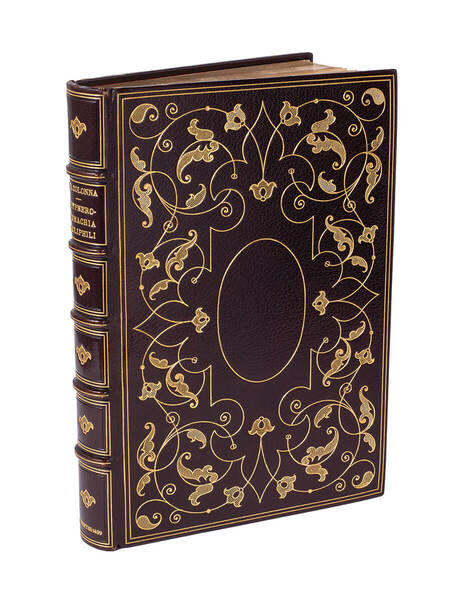
COLONNA, Francesco
Hypnerotomachia Poliphili, ubi humana omnia non nisi somnium esse docet atque obiter plurima scitu sanequam digna commemorat.
SOLD OUT![[The Commentaries.] C. Julii Cæsaris Quae Extant. Accuratissimè cum Libris Editis & MSS optimis Collata, Recognita & Correcta. Accesserunt Annotationes Samuelis Clarke. S.T.P. Item Indices Locorum, Rerumque & Verborum Utilissimæ. Tabulis Æneis Ornata. [The Commentaries.] C. Julii Cæsaris Quae Extant. Accuratissimè cum Libris Editis & MSS optimis Collata, Recognita & Correcta. Accesserunt Annotationes Samuelis Clarke. S.T.P. Item Indices Locorum, Rerumque & Verborum Utilissimæ. Tabulis Æneis Ornata.](https://www.medariquier.com/typo3temp/pics/e0a4828aa4.jpeg)
CAESAR, Gaius Julius
[The Commentaries.] C. Julii Cæsaris Quae Extant. Accuratissimè cum Libris Editis & MSS optimis Collata, Recognita & Correcta. Accesserunt...
€ 20.000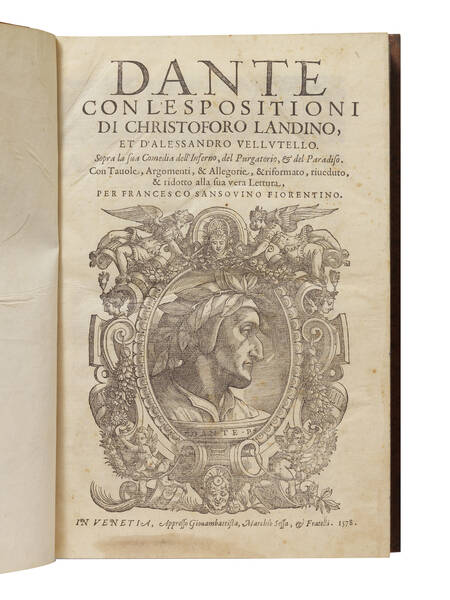
ALIGHIERI, Dante
Dante con l’espositioni di Christoforo Landino, et d’Alessandro Vellutello. Sopra la sua Comedia dell’Inferno, del Purgatorio, & del Paradiso. Con...
SOLD OUT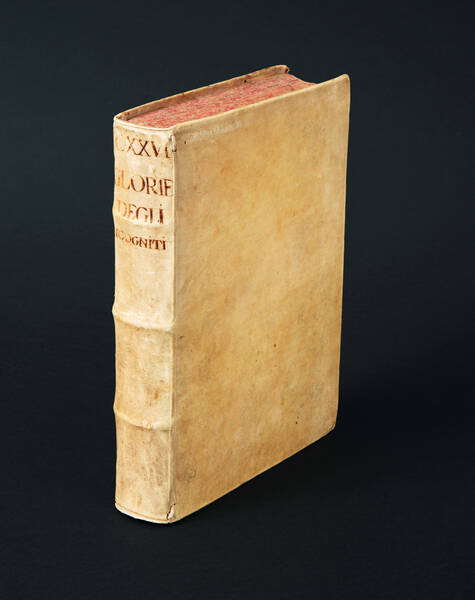
[BRUSONI, Girolamo]
Le glorie de gli Incogniti o vero gli huomini illustri dell'Accademia de' signori Incogniti di Venetia.
€ 8.000MEDA RIQUIER rare books ltd.
4 Bury Street St James's
SW1Y 6AB London
Phone +44 (0) 7770457377
info@medariquier.com
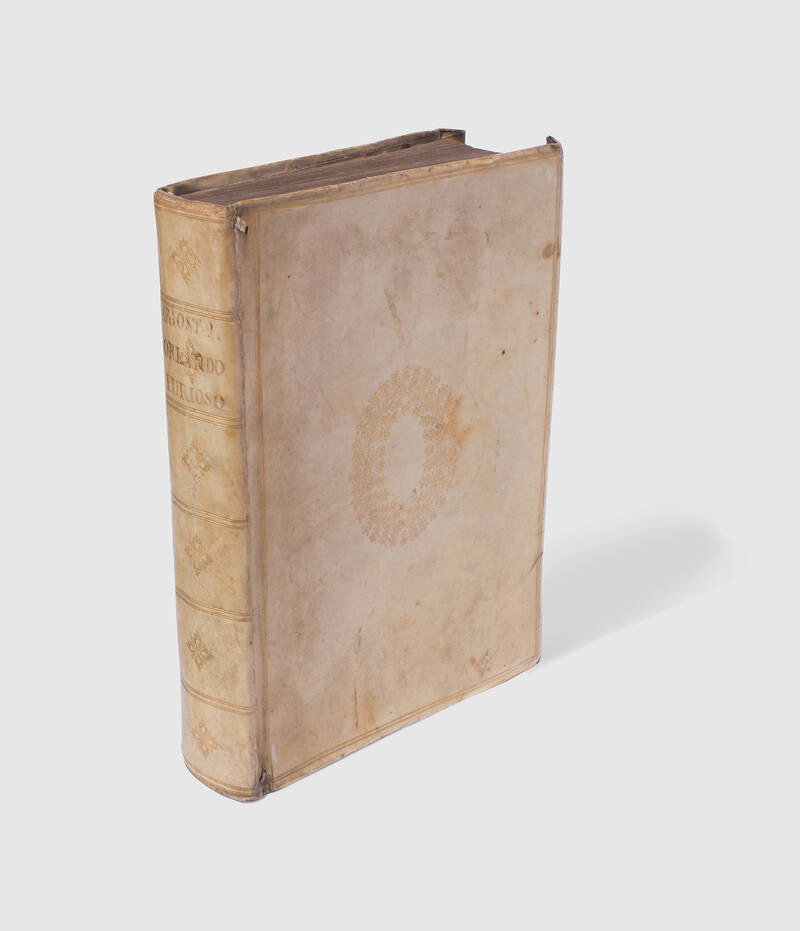
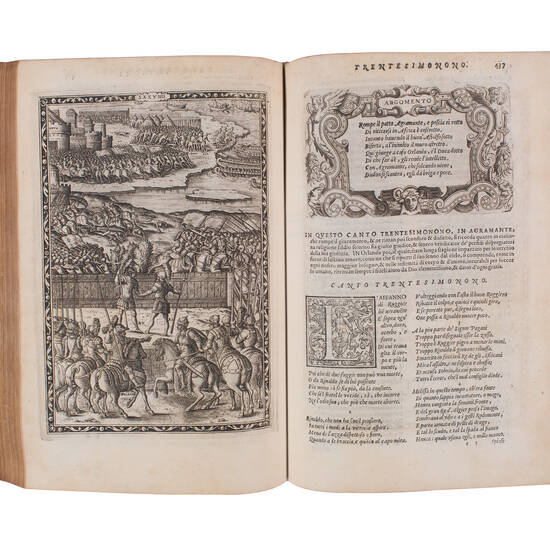
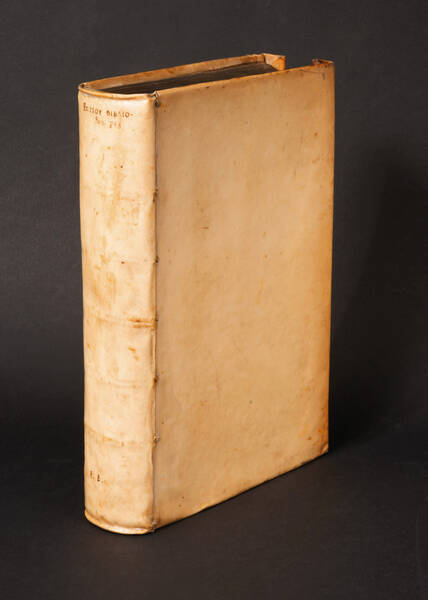
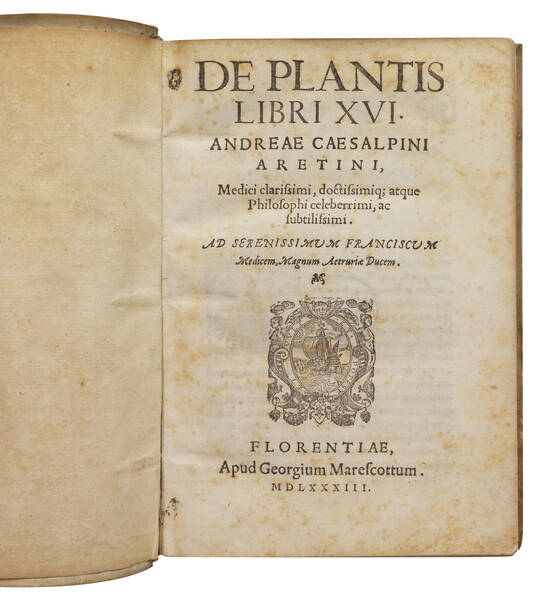
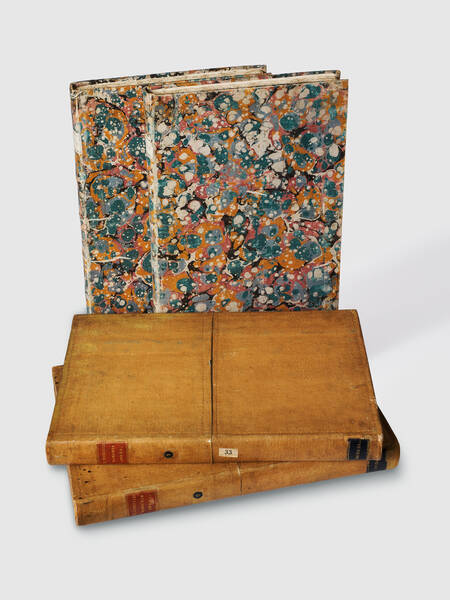
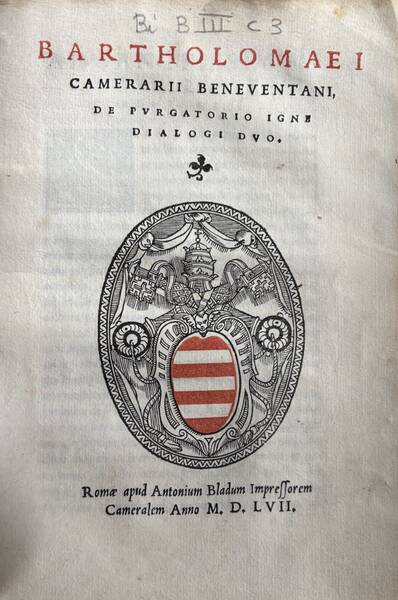
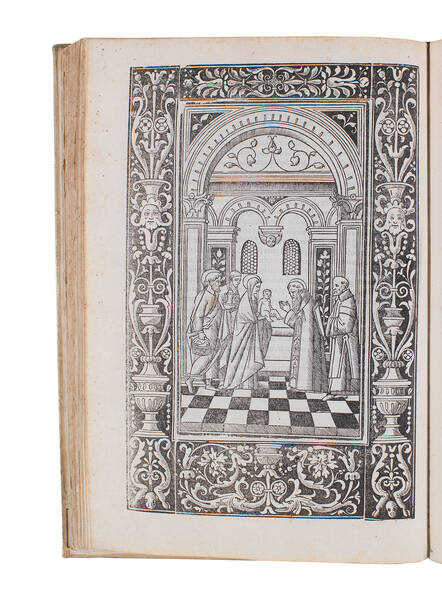
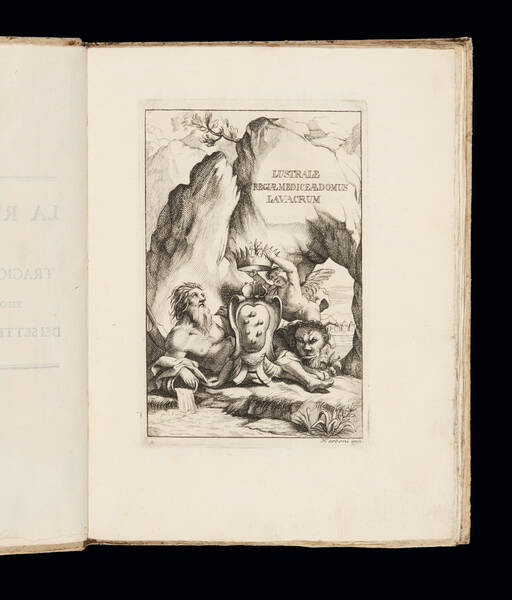
![Tragoediae septem cum commentariis. [Greek] Edited by Johannes Gregoropoulos Cretensis]. Tragoediae septem cum commentariis. [Greek] Edited by Johannes Gregoropoulos Cretensis].](https://www.medariquier.com/typo3temp/pics/a7f4ddada3.jpeg)